London's Iconic Green Spaces: The Royal Parks
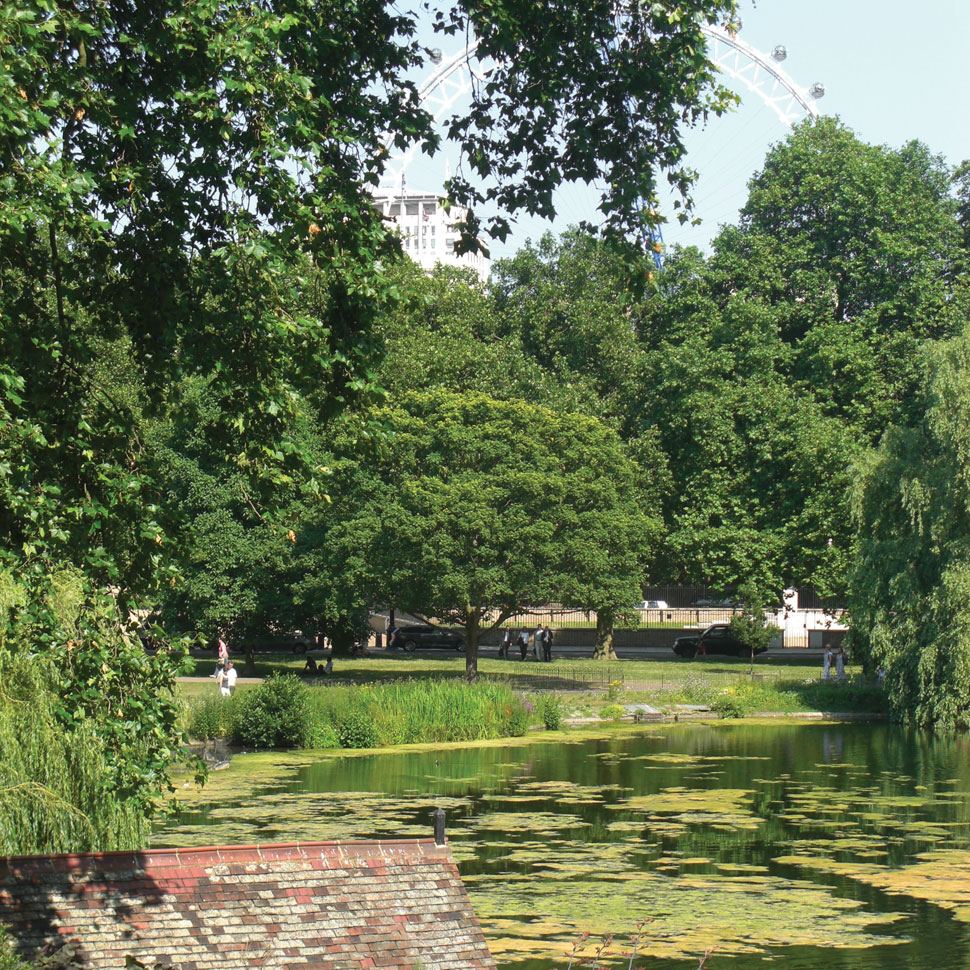

Delve inside the history of some of London's most beautiful grounds...
Covering 5,000 acres of carefully conserved historic parkland, London’s Royal Parks are among the city’s most beautiful and beloved spaces; busting with life, they are the lungs of London’. Owned by the Crown, each of the former royal hunting grounds has a grand history – some were owned as far back as the Norman Conquest, others were acquired by Henry VIII during the Reformation. Since being gradually opened to the public, they’ve hosted some of London’s greatest events, including the Great Exhibition and innumerable jubilees, and now offer a retreat from the capital’s hustle and bustle, attracting over 37 million visitors every year. With approximately 135,000 trees and 100,000 roses, they have a beauty, tranquility and diversity that you won’t find anywhere else.
Photograph: Looking towards the London Eye from St James’s Park.
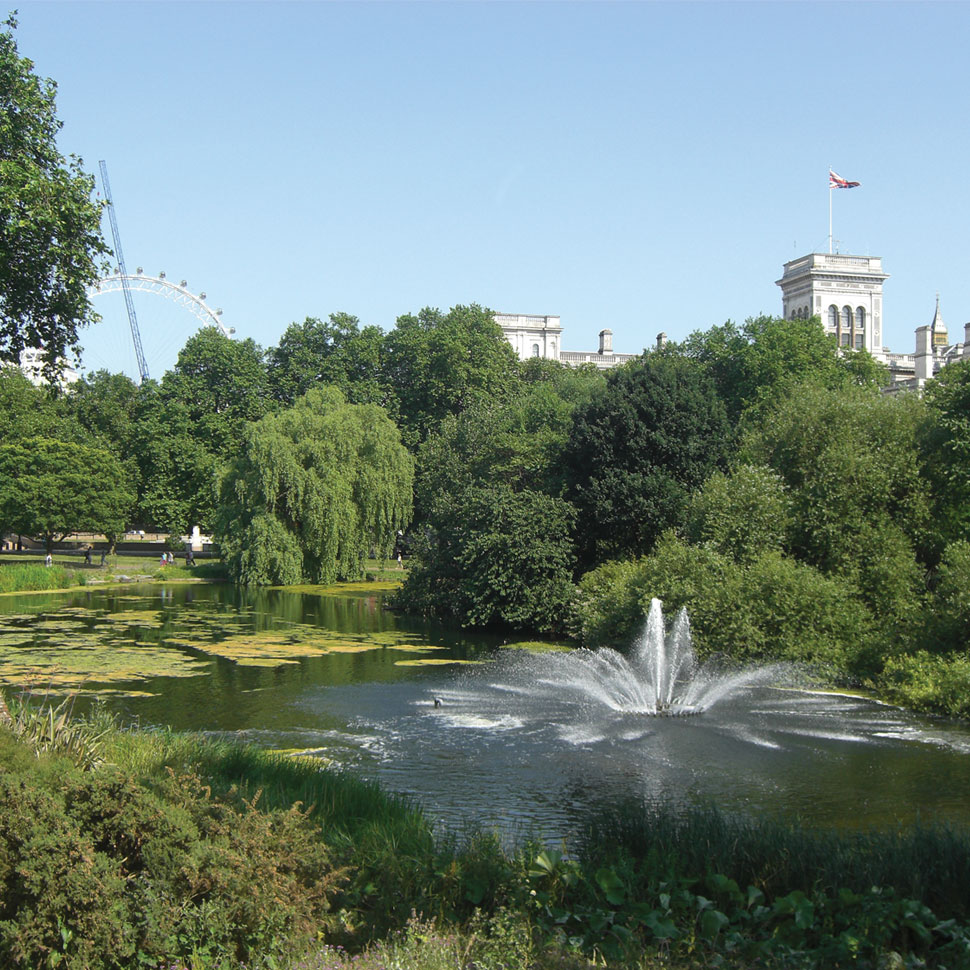
London's Royal Parks: St James's Park
Once a marshy water meadow, St. James’s Park originally took its name from a hospital for women suffering with leprosy, which was founded on the land in the 13th century. In 1533, Henry VIII demolished the building, and erected a goodly manor’ to live in. When Elizabeth I came to the throne, she indulged her love of pageantry and pomp, and several fetes were held in the park. But it was Charles II who redesigned the park with avenues of trees and lawns. He opened the park to the public and was a frequent visitor, feeding the ducks and mingling with his subjects’. In the 18th century, one end of the canal was filled in to make Horse Guards parade ground, and in the 1820s, the park got a further makeover when architect, John Nash, redesigned it in a romantic style. He transformed the canal into a natural-looking lake and in 1837 the Ornithological Society of London presented birds to the park and erected a cottage for a birdkeeper. The park is now the setting for spectacular pageants, like Trooping the Colour’, and is surrounded by some of the country's most famous landmarks, including Buckingham Palace, Clarence House, St James's Palace and Westminster. Photograph: The palace of Whitehall was destroyed by fire in 1698 and much of the site was then built over. Today the view from St James’s Park towards the government offices of Whitehall beyond Horse Guards Parade is one of London’s most familiar sites.

London's Royal Parks: Green Park
Green Park dates back to 1554 when Sir Thomas Wyatt led a rebellion in protest against the marriage of Mary I to Philip II of Spain. It was a famous duelling site until 1667 when Charles II bought an extra 40 acres, enclosed it and stocked it with deer - and it became known as upper St James’s Park. While now devoid of buildings, the park once contained lodges, a library, an icehouse and two vast 'temples'; in 1749, the Temple of Peace, erected to mark the end of the War of Austrian Succession, exploded during a firework display and in 1814, the Temple of Concord, which marked 100 years of the Hanoverian Dynasty, was destroyed during the Prince Regent’s gala. By 1746, it was called The Green Park, and it became more of a pleasure garden. The Tyburn Pool was built, and in the 1720s a reservoir, The Queen’s Basin’ was made to supply water to St James's Palace and Buckingham House. The park was finally opened to the general public in 1826. But the Green Park that emerged from the 19th century and developed during the 20th century is now a pleasantly uncluttered place that resembles a little expanse of blissfull countryside. Photograph: Canada Gate, commissioned in 1905 as part of the memorial to Queen Victoria who had died in 1901 and presented to London by Canada.

London's Royal Parks: Hyde Park
After acquiring the park from the monks of Westminster Abbey, Henry VII used Hyde Park as a private hunting ground to satisfy his passion, where visitors would watch from grandstands and enjoy gorgeous feasts in temporary banqueting houses. The tradition continued with Queen Elizabeth I, but when Charles l became king in 1625, he created a circular track called the Ring where members of the Royal Court could drive their carriages, and opened it to the public in 1637. Towards the end of the 17th century William III moved his court to Kensington Palace, and created the first artificially-lit highway in the country, while the 1730s saw the creation of The Serpentine, a lake of 11.34 hectares, by Queen Caroline, wife of George II. Before long, the Park became a venue for national celebrations; in 1814, fireworks marked the end of the Napoleonic Wars and a year later, the Great Exhibition was held. In 1930, the Lido was set up by George Lansbury, the first Commissioner of Works, which today is used for sunbathing and swimming. Hype Park now stands as one of London’s finest landscapes - and covers over 350 acres. Photograph: General view of the Albert Memorial, the monument to the Prince Consort, which occupies part of the site where the Crystal Palace once stood.
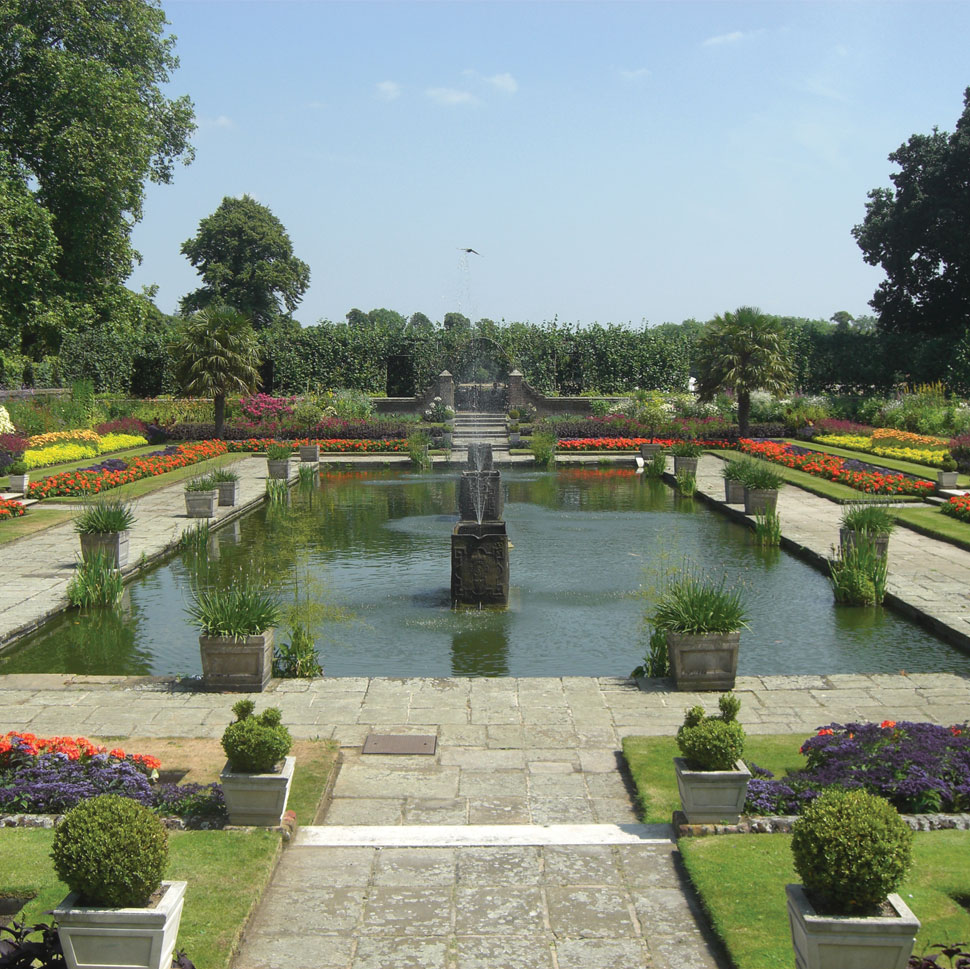
London's Royal Parks: Kensington Gardens
Originally part of Hyde Park. Kensington Park covers 242 acres and is the setting for Kensington Palace, which became the residence of William III in 1689. Queen Anne enlarged the Palace Gardens, 'transferring' 30 acres from Hyde Park and was responsible for the creation of the Orangery in 1704. But the biggest changes came in 1728 when Queen Caroline, the wife of George II, began to transform Kensington Gardens into the park it is today, taking another 300 acres from Hyde Park and employing Charles Bridgeman to produce a new design. In the late the 18th century the gardens were opened to the public on Saturdays to anyone respectably dressed’ – until it later lost its spot in the limelight. Queen Victoria moved the court to Buckingham Palace, and in a long series of improvements commissioned the Italian Gardens and the Albert Memorial. The beautiful avenues and architecture of Kensington Gardens has since featured in films, including Bridget Jones: The Edge of Reason and Finding Neverland. Photograph: The Sunken Gardens at Kensington Park. These have changed little since the last century.
Sign up to our free daily email for the latest royal and entertainment news, interesting opinion, expert advice on styling and beauty trends, and no-nonsense guides to the health and wellness questions you want answered.

London's Royal Parks: Regent's Park
Known today as the 'jewel in the crown', in 1538, Henry VIII seized The Regent’s Park from the owner, the Abbess of Barking, and turned 554 acres into a hunting chase. Between 1649 and 1660, the Commonwealth Government under Oliver Cromwell chopped down trees to pay debts from the war, but when he died and Charles I became king, the park returned to the crown and for the next 150 years the land was leased to tenant farmers. Then in 1812, the crown spotted a financial opportunity, and government architect, John Nash was hired by the Prince Regent to develop the area. A vast rounded park was designed, surrounded by palatial terraces, a lake, a canal, 56 planned villas (only 8 were ever built) and a second home for the Prince - which was never built because he turned his attention instead to improving Buckingham Palace. In 1835, the east side was open to the public; eventually people could visit the whole park and Primrose Hill nearby, and local societies, like the Zoological Society and the Royal Botanic Society, leased space left by the unbuilt villas. Today, whether it’s to admire Nash’s terraces and villas or simply wander the 197 hectares of land, Regent’s Park is a place to return to again - and again. Photograph: The Avenue Gardens in full bloom and fully restored.
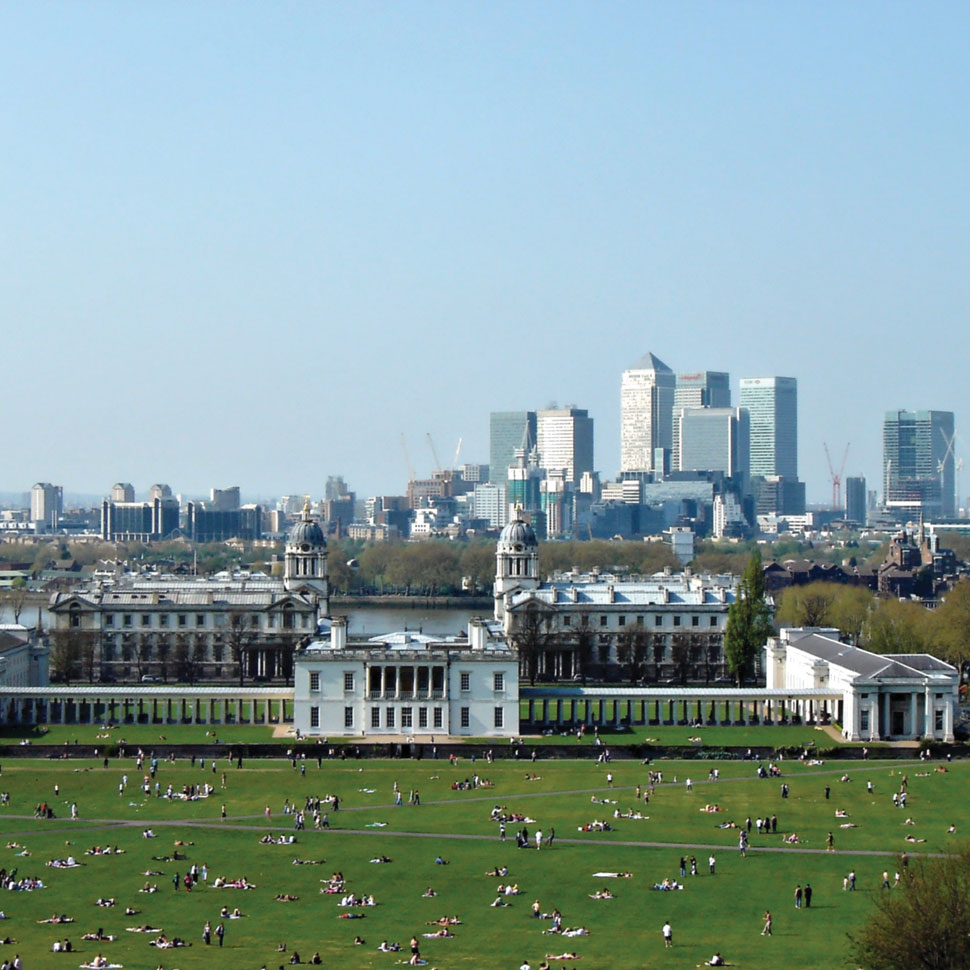
London's Royal Parks: Greenwich Park
Greenwich Park is the largest enclosed park – and there’s been a settlement on the site since Roman times. First inherited in 1427 by the Duke of Gloucester, brother of Henry V, Greenwich was the birthplace of Henry VIII - who introduced deer to the park. In the 17th century, the Stuarts transformed the park. James I gave the park – and Greenwich Palace - to his wife, Queen Anne, allegedly as an apology for swearing at her in public when she accidentally shot one of his favourite dogs – and she commissioned Inigo Jones to design her a special home which became know as the Queen's House. In the 1660s, King Charles II’s interest in science resulted in him commissioning Sir Christopher Wren to build The Royal Observatory, named Flamsteed House after the first Royal Astronomer, John Flamsteed. The last monarch to use Greenwich was King James II; after that royal interest faded, and during World War II, anti-aircraft guns were set up in the park. Many of the trees in the Flower Garden had their tops cut off to give the guns a better field of fire. After the war, the park was restored to its former glory – and it now boasts herds of deer expanse of greenery, fabulous greenery - and one of the finest views across London. Photograph: View to Canary Wharf from Greenwich Park.
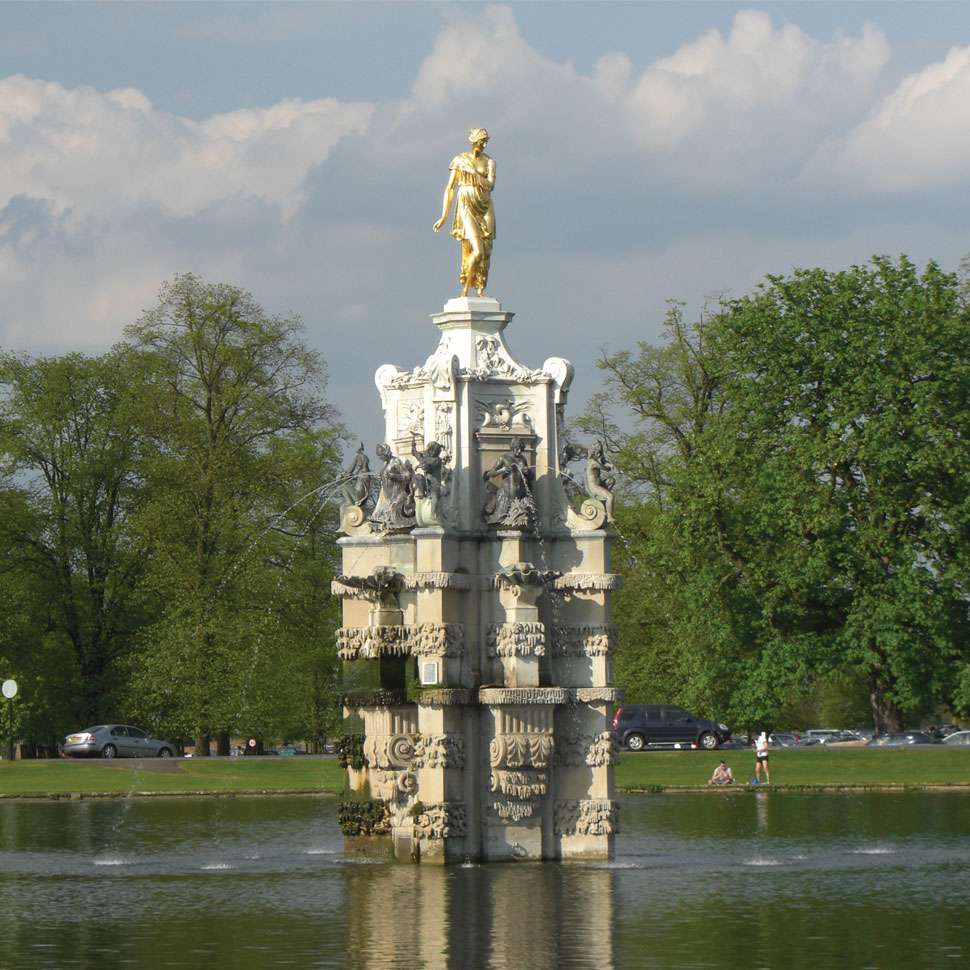
London's Royal Parks: Bushy Park
The spectacular Bushy Park has remains of medieval farmland, a Tudor deer park, 17th century water gardens - and wartime camps. It became a royal park in 1529 when Cardinal Wolsey gave it to King Henry Vlll as part of a gift, which included Hampton Court. He immediately created a deer chase, building a brick wall around the park; until then, the park had been agricultural land. In 1610, King Charles I created the Longford River, an ornamental canal, which brought water from the River Colne in Hertfordshire to water features in the park, and commissioned a statue and fountain for his Queen, Henrietta Maria. Houses were added in the 17th and 18th centuries, used as hunting lodges and homes for the ranger, and new gardens planted too. During World War I, Canadian troops were stationed in the park and Upper Lodge became the King's Canadian Hospital; a totem pole was installed in 1992 in the Woodland Garden to mark the connection with Canada. Later, during World War II, part of the park became Camp Griffiss, the base for the US 8th Army Air Force, US Strategic Air Forces and later the Supreme Headquarters Allied Expeditionary Forces. Yet today, Bushy Park is the Sleeping Beauty’ of the Royal Parks, mixing formal avenues, statues and gardens with the wild appeal of a country park. Photograph: The restored Diana Fountain in 2013.

London's Royal Parks: Richmond Park
The royal connections to Richmond Park go back further than any of the others, beginning with King Edward I, who in the 13th century used the area, known then as the Manor of Shen, to hunt. Its name only changed to Richmond during Henry VII's reign (1485-1509), when he built a palace and his successors hunted there. In 1625, Charles I brought his court to Richmond Palace from Hyde Park to escape the plague in London and turned it into a park for red and fallow deer. His decision, in 1637, to enclose the land wasn’t popular with local landowner local residents, but he allowed pedestrians the right of way. In 1847 Pembroke Lodge, which began life sometime prior to 1754, was granted by Queen Victoria to then Prime Minister, Lord John Russell, and was later the childhood home of his grandson, Bertrand Russell. After World War II, the Isabella Plantation, a stunning woodland garden, was created from an existing woodland – and today it offers the best show of rhododendrons and azaleas in London. Photograph: Isabella Plantation in spring – now carefully managed by the Royal Parks to maintain a balance between public access and biodiversity.

London's Royal Parks by Paul Rabbitts
Discover more about the history of the parks in London’s Royal Parks by Paul Rabbitts (Shire Publications, £8.99), out now.
Natalie Whittle is a British journalist specialising in celebrity content in the women's lifestyle sector. She previously held the role of Celebrity Director at Woman & Home and has also worked at Prima, Red & Good Housekeeping.
